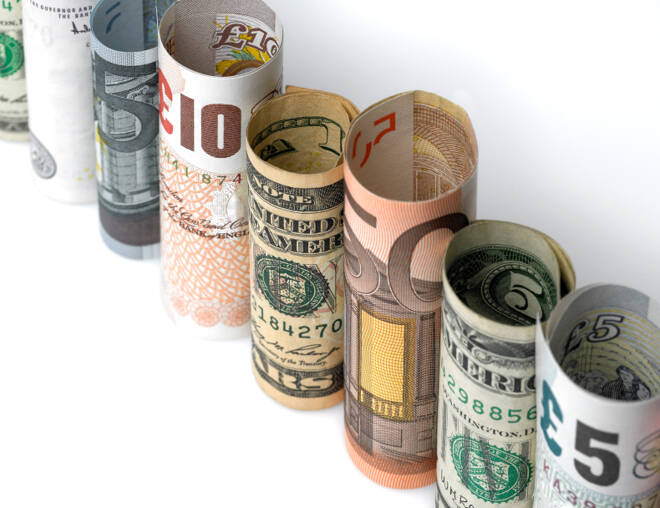Advertisement
Advertisement
Weekly Asia-Pacific Currency Recap: Yen, Aussie, Kiwi Weaken as Safe-Haven Demand Drives Greenback Higher
By:
The Japanese Yen fell to a more than one-week low on fears about a fast-spreading new coronavirus strain that was discovered in the U.K.
The major Asia-Pacific currencies edged lower last week as the U.S. Dollar strengthened on position-squaring and profit-taking ahead of the long-holiday weekend. There was some volatility early in the week which made the Japanese Yen a less-desirable safe-haven while driving down demand for the higher-risk Australian and New Zealand Dollars.
There was little domestic data in Japan, Australia and New Zealand to drive the price action, but the recent movement indicates traders are throwing their attention to the weaker U.S. Dollar.
Traders have been dumping greenbacks, while buying Yen, Aussie and Kiwi because of expectations of a faster recovery in the global economy due to the rollout of the coronavirus vaccines. An accommodative Fed and new fiscal stimulus from the U.S. government has also been capping the U.S. Dollar.
Japanese Yen
The Japanese Yen fell to a more than one-week low on Monday in a holiday-shortened week on fears about a fast-spreading new coronavirus strain that was discovered in the U.K., prompting investors to seek safety in the U.S. Dollar.
Last week, the USD/JPY settled at 103.500, up 0.187 or +0.18%.
Low liquidity, with many traders logged out for the year, exaggerated the speed and size of the dollar’s gains against the Yen, too, as stop-loss mechanisms dumped investors out of bets against the greenback.
Domestic economic data was mixed. Bank of Japan (BOJ) Core CPI fell 0.1%. Tokyo Core CPI dropped -0.9% and Retail Sales rose 0.7%, missing the estimate of 1.8%.
The Unemployment Rate rose 2.9%, better than the 3.1% forecast and Housing Starts fell 3.7%, but beat the -4.8% estimate.
Australian Dollar
The Australian Dollar edged lower last week with most of the loss coming in Monday’s session as investors dumped the higher-yielding currency on worries over a fast-spreading new coronavirus strain in the U.K. Money flowed out of the Aussie and into the safe-haven U.S. Treasurys and U.S. Dollar. Investors also shed risk in the global equity markets.
Last week, the AUD/USD settled at .7600, down 0.0023 or -0.30%. Despite the lower close, the Forex pair remained within striking distance of its 2-1/2 year high hit earlier in the week.
After the initial break at the start of the week, the Aussie spent the next two session clawing back most of those losses after experts said there was no evidence that vaccines would not protect against the new virus variant. Nonetheless, Britain’s chief scientific adviser said that in the meantime tighter restrictions on public life in Britain were likely.
New Zealand Dollar
The New Zealand Dollar also finished marginally lower, tracking the same pattern as the Australian Dollar and Japanese Yen, and for the same reason – fear the new coronavirus variant could slow down the global economy recovery. A short-covering rally in the U.S. Dollar also weakened the commodity-linked currency.
Last week, the NZD/USD settled at .7124, down 0.0017 or -0.24%.
Following its steep sell-off on Monday, Kiwi bulls regained their composure to retrace more than 50% of its earlier losses. The move was driven by a rise in risk appetite on the expectations of a Brexit trade deal between the U.K. and the European Union. Also helping to underpin the New Zealand Dollar was the announcement of a new stimulus package agreement in the United States after several months of negotiations.
For a look at all of today’s economic events, check out our economic calendar.
About the Author
James Hyerczykauthor
James Hyerczyk is a U.S. based seasoned technical analyst and educator with over 40 years of experience in market analysis and trading, specializing in chart patterns and price movement. He is the author of two books on technical analysis and has a background in both futures and stock markets.
Advertisement
